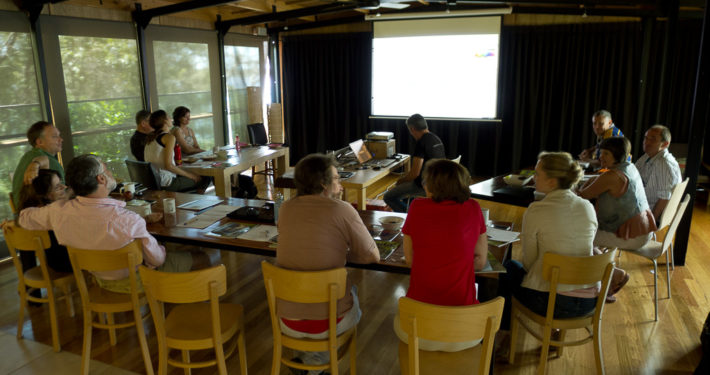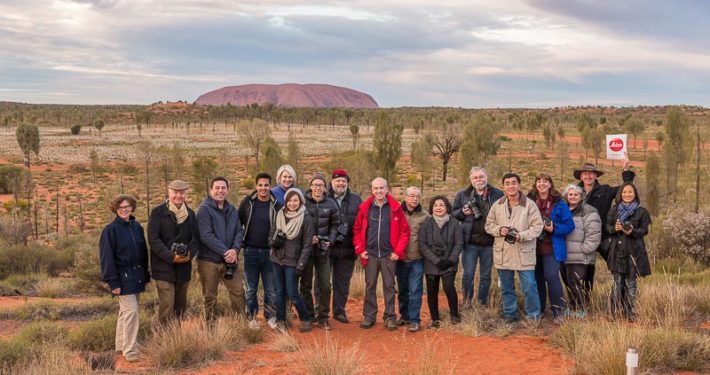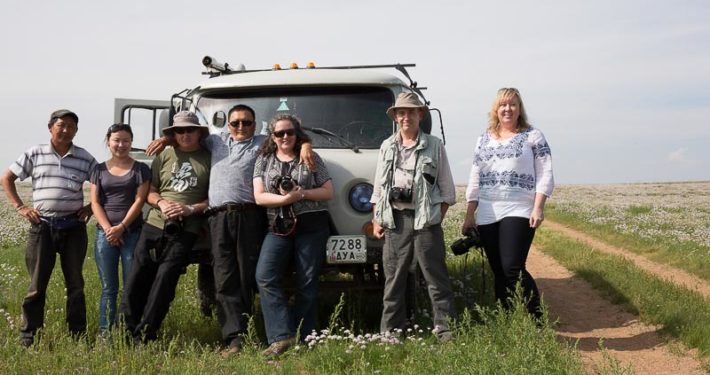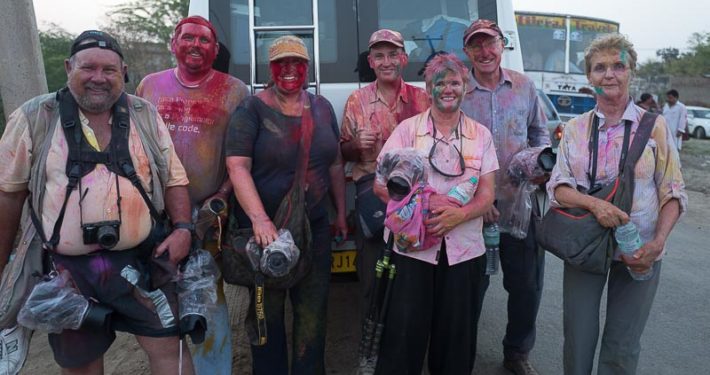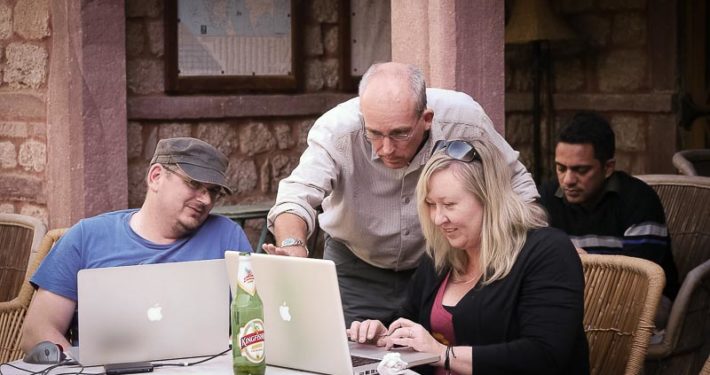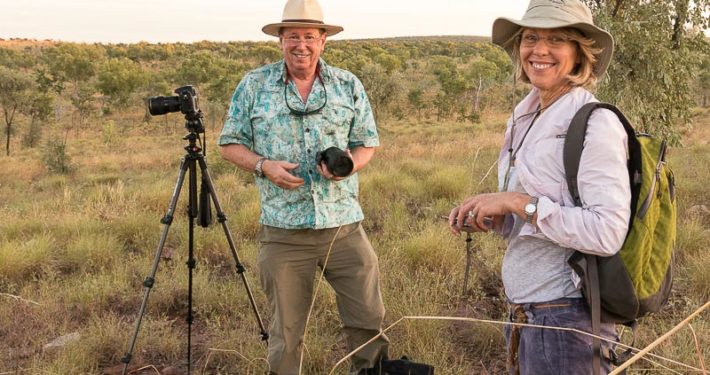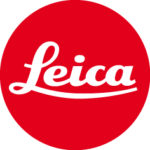What Happens on a Workshop
Good photography workshops and tours are about more than just taking photos. Everyone in the group will be as keen as you are so everyone has something in common. Strangers on day one will become fast friends by the end of the trip so if you are booking as a single guest, don’t worry, everyone fits in right away.
These tours are very convivial too. We try to go to the best best restaurants available (or at least the most interesting!), we don’t scrimp on the hospitality (ask me about Black Tea some day) and we do our utmost to have a good time.
We all like to know what to expect when we go away – so we have compiled some information on a few of the practical aspects of our photo tours.
1. Level of Experience
We are always happy to cater for the full range of photographic skills from beginner to full time professional and it’s the genuinely committed enthusiast that will get the most out of our trips. The tours are about making the most of the photographic opportunities that your Akademie Instructor will have created for you and to this end we really encourage you to become thoroughly familiar with certain aspects of your camera operation.
Our Instructors are, of course, very knowledgeable about photography but, with the best will in the world, cannot know all the subtleties of the enormous number of different digital cameras available these days. We urge you to take the time before the trip to become very comfortable with the following camera operations:
- Setting different Apertures, Shutter Speeds and ISO.
- Selecting a metering mode like Manual or Aperture Priority.
- Setting Exposure Compensation.
- Selecting and adjusting Exposure Bracketing.
- Using a self timer or cable release.
- Setting up and using a tripod.
- What these are all for is part of what your Instructor can teach you, but it’s up to you to know which button to press or which menu to locate. Please bring camera manuals with you, either in hard copy or as a PDF on a tablet, phone or laptop.
- If you need a refresher, or are a bit hazy about some of the above, here’s a link to a Leica Akademie document called Photo Fundamentals that I wrote to give you a perspective on all the above as well as much more. To get the most out of your trip we strongly recommend you download and at least look through this document. Even if you consider yourself an advanced photographer you might find something of interest!
www.leica-akademie.com.au/downloads/photo-fundamentals.pdf
2. Our Approach
These are tours for photographers. They are not sightseeing tours. What that means is that the itinerary is set 100% with one thing in mind – how to make the most of our time to get the best possible photo opportunities.
A consequence of this is that we might not actually go to certain famous places and will almost certainly go to places you have never heard of. The reason we sometime miss out the more obvious places is because we are all about quality, not quantity. Some places are undoubtedly amazing to visit but totally useless as far as photography is concerned – often due to the sheer numbers of other visitors there rather than any lack of ‘spectacular-ness’.
We try to set up authentic travel and street photography experiences and this will take us to some totally out of the way locations where we might be the only foreigners for miles. Queuing up to see a historical monument is not what we are about. If you want to do that then we suggest staying on in the country and doing a separate trip, more focussed on sightseeing than photography. For us, it’s all about the photos.
One other thing: our itinerary is usually set so as to allow some flexibility. Opportunities arise and others evaporate. We only take small groups because this allows us to be nimble and react to situations that present themselves. We ask our guests to be flexible too so if the itinerary changes it will be because something better has cropped up and your group instructor has made a decision to make a change based on the new opportunity.
3. Fitness
Our photo tours are generally not particularly strenuous – if they were it would be made very clear in the product information. However, there will be days where we are on our feet for many hours, walking the backstreets of some amazing location or climbing up to a sensational lookout. We don’t expect you to be running up hills or anything but you do need to be robust enough to carry whatever gear you bring for many hours, often with limited opportunities for a sit-down.
There may also be days where we are travelling by bus or train, sometimes catching a local train in the middle of the night or negotiating the crowded freeways of big cities on our bus. We do try to minimise the ‘boring’ bits but getting from A to B is a necessary part of any travel experience so we urge guests to be a bit resilient and somewhat flexible.
4. Data Storage
On multi-day trips you will need somewhere to download and view your images – even if you choose to leave images on your memory cards they should still be backed up as soon as possible.
Furthermore, it’s an incredibly valuable teaching tool for the Instructors to be able to view and provide feedback on the images you have created. Please bring a laptop, even a small one – iPads are not appropriate, have limited storage space and struggle with hi-res raw files.
5. Early Starts and Departure Times
We frequently go out in the very early morning, before dawn, and sometimes stay out into the late evening for sunset. This is when the best photos are often taken so if you are not a naturally early riser don’t say we didn’t warn you!
Given that the sun and moon don’t wait for us it’s critically important that you are ready on time when we go out shooting. ‘Ready’ as in fully packed with whatever gear you need for the upcoming shoot so you can hop into the car (or bus, camel, whatever) and get going. We try to leave at exactly the time that you will have been briefed on, and we don’t go looking for latecomers. It’s your trip, there is never any pressure to take part in every shoot or excursion, but if you sleep in by mistake and show up 10 mins too late you will probably find that we have left without you. I know it sounds harsh but the alternative is that the entire group misses the light, which is of course not fair to everyone else. Bring a reliable (and loud) alarm clock!
6. Camera Gear
Here’s a minimum suggestion for a multi day photo tour:
Two camera bodies that both work with all your lenses – one can act as a spare and/or can be used as a second body for shooting. Taking only one camera body makes you terribly vulnerable to disaster.
A mid range zoom – something like a 24-90mm, or equivalent, will often end up being your most used lens and if you brought nothing else you could shoot 90% of the photos you need on a lens like this. All major camera brands have something good in this range.
A wide lens – something around 16-21mm (35mm format equivalent). Great for interiors and expansive vistas.
A modest telephoto – some sort of 70-200mm or 90-280zoom is perfect but they are big and you will need to carry it. A fixed 135mm or 200mm is good too.
Tripod – Essential. Mandatory. Critical. Seriously, you don’t want to be in a situation where you need to use long exposures and you didn’t bring a decent tripod. You’ll not need it all the time, but when you do, you will get better photos because of it. Bring a good tripod too. No camera benefits from being used on a flimsy tripod that’s awkward to use so invest in a decent model that is genuinely rigid and has a good quality ball head with a quick release plate. We use and recommend tripods from Manfrotto, Gitzo and RSS, with ball heads from Kirk and RRS.

